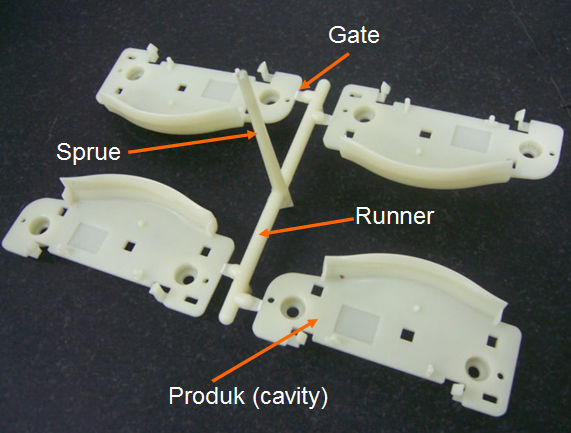Did you know that you interact with plastic products that were created by
injection molds every single day? If you were to examine all of the plastic products around you, you would be able to quickly find marks that were left by injection molds.
Due to the nature of using a machine to create plastic products, injection molds leave identifiable marks on plastic products. These marks are not typically desired but are unavoidable.
The components of an
injection mold tool, such as the sprue, runners, gates, ejector pins, and parting line, all leave marks.

The Sprue & Runner
The sprue and the runners leave extra plastic that usually needs to be removed by manually twisting or cutting them off. These parts can be recycled and reused. Some plastic products, like the parts for model cars and planes, leave the runners attached.
The Ejector Pins
The ends of the ejector pins are not always perfectly aligned with the ejector mold (B Plate) and either stick out a little into the cavity image or are slightly indented to form a gap between the ejector mold (B Plate) and the cavity image. This leaves circular ejector pin marks on molded products. If you look at the bottom of a plastic chair, you will find many ejector pin marks.
The Parting Line & Gates
The parting line and gates also leave similar marks. Mold halves are never perfectly aligned and do not have sharp corners, creating a natural parting line on the plastic product. If you look at plastic cutlery, you will be able to find their marks.
Causes
These marks can be caused during the
injection mold tooling process by minor misalignments, natural wear and tear, air vents, moving parts, or dimensional differences of the mold. Some molds can be designed to hide the marks.
Intentional Marks
Some designers purposefully add marks to their plastic products, such as instructions, warnings, or date and time stamps. Often times companies leave a date wheel that displays the month and year in which the plastic product was created. This is so the companies can track down defects.
Go see how many injection mold marks you can find on the plastic products around you!



